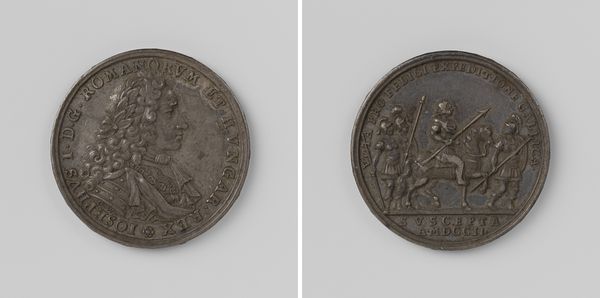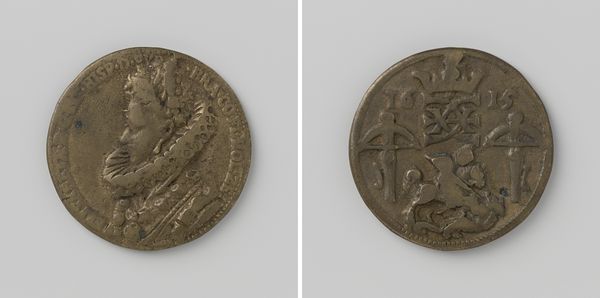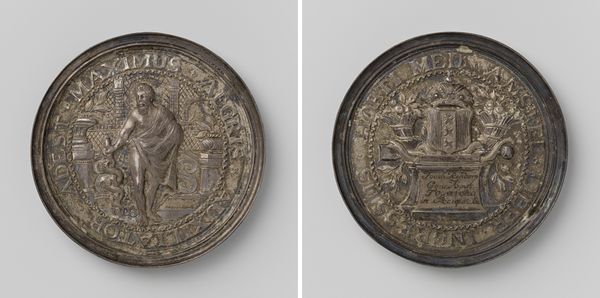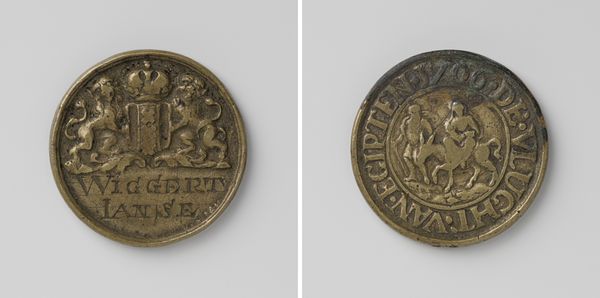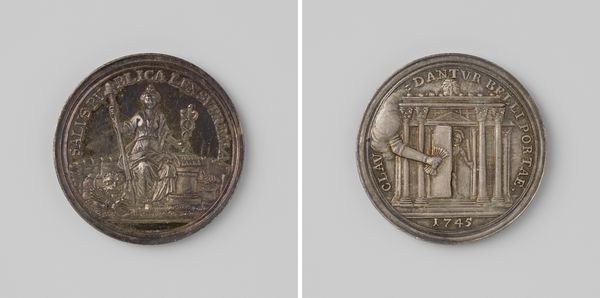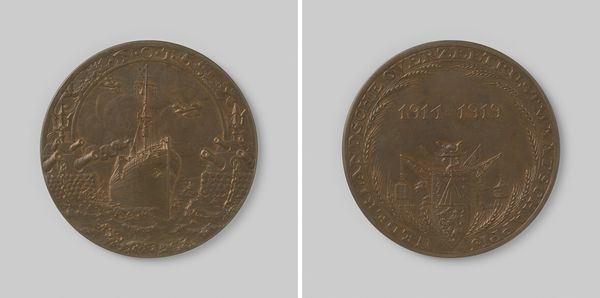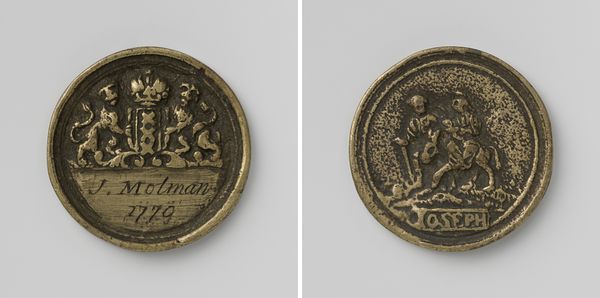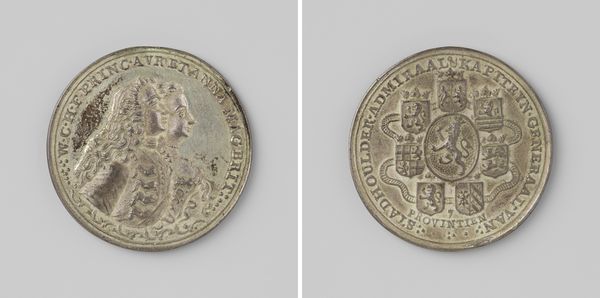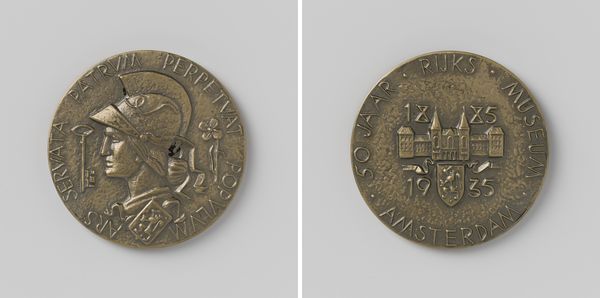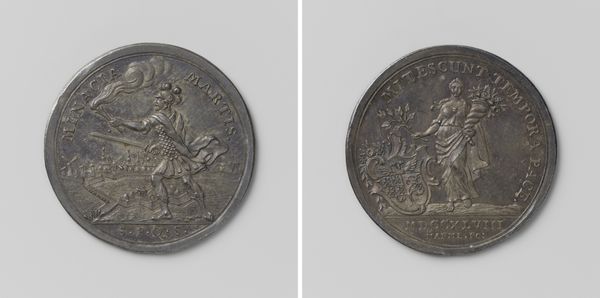
metal, bronze, sculpture
#
medieval
#
metal
#
sculpture
#
bronze
#
11_renaissance
#
sculpture
Dimensions: diameter 3.4 cm, weight 17.94 gr
Copyright: Rijks Museum: Open Domain
Editor: Here we have a bronze medal from 1648, titled "Chirurgijnsgilde te Amsterdam, toegangspenning voor de hortus medicus," by an anonymous artist. It shows imagery on both sides; one with a skeleton and surgical instruments and the other with a vase of flowers. What strikes me is how both death and life are contrasted within a single work of art. What are your initial thoughts? Curator: It's fascinating to consider this medal within the broader context of guild production and social dynamics of 17th century Amsterdam. As a means of understanding production, think of bronze. It isn’t merely a material, but the result of labor: mining, smelting, and casting techniques. Guild membership, represented by the medal, dictated who could participate in this production process. Do you think the imagery reinforces guild control? Editor: I hadn’t thought of it that way. The skeleton holding a scythe and a medical text certainly communicates authority, I guess. It makes the medal more than just decorative. But why combine that imagery with flowers? Curator: The flowers represent the "hortus medicus," a medicinal garden, hinting at botanical knowledge essential for surgeons and apothecaries. Look at the medal as a tangible link between intellectual pursuits, artisanal practice, and material access. Owning this medal was like holding access to specialized materials, skills, and even bodies themselves. Do you agree? Editor: I see, so it’s about the production and consumption of medical knowledge and care. It gives the idea of guilds much more weight than I had considered before. Curator: Precisely. Medals like this offer insights into social structures through an object’s materiality and the conditions of its creation. It really opens my mind. Editor: I agree. It gives such insight when one looks through a materialist lens.
Comments
No comments
Be the first to comment and join the conversation on the ultimate creative platform.
